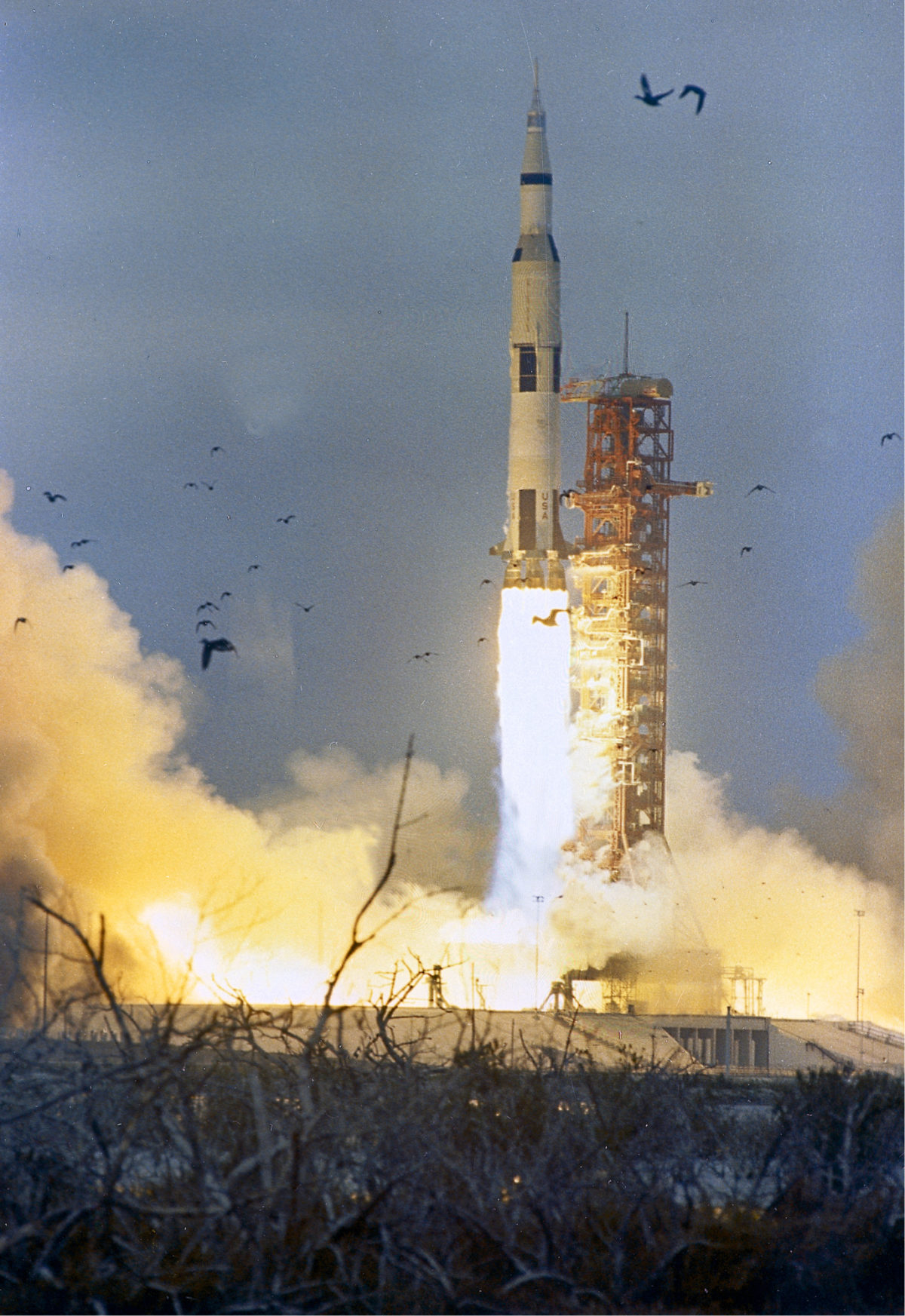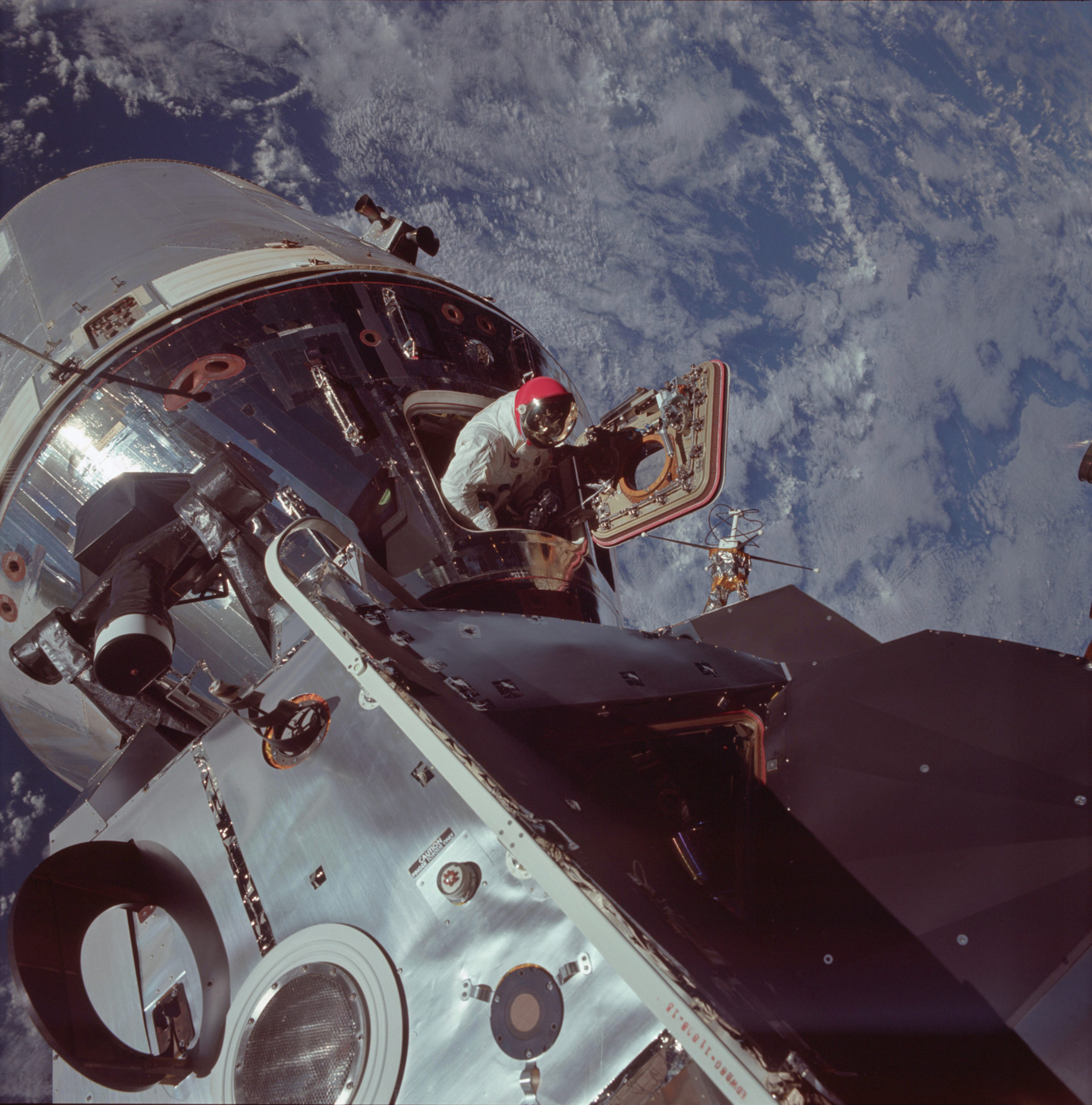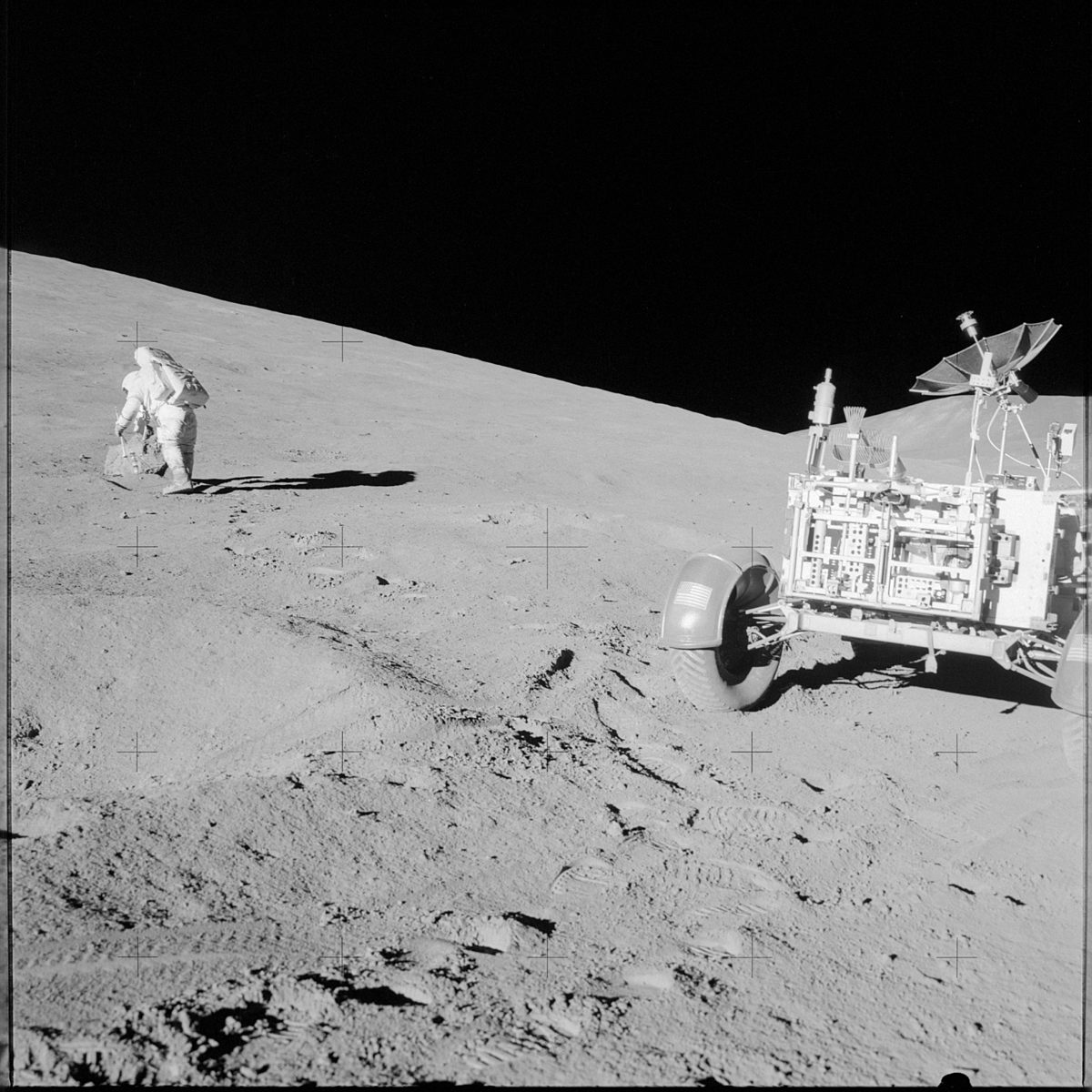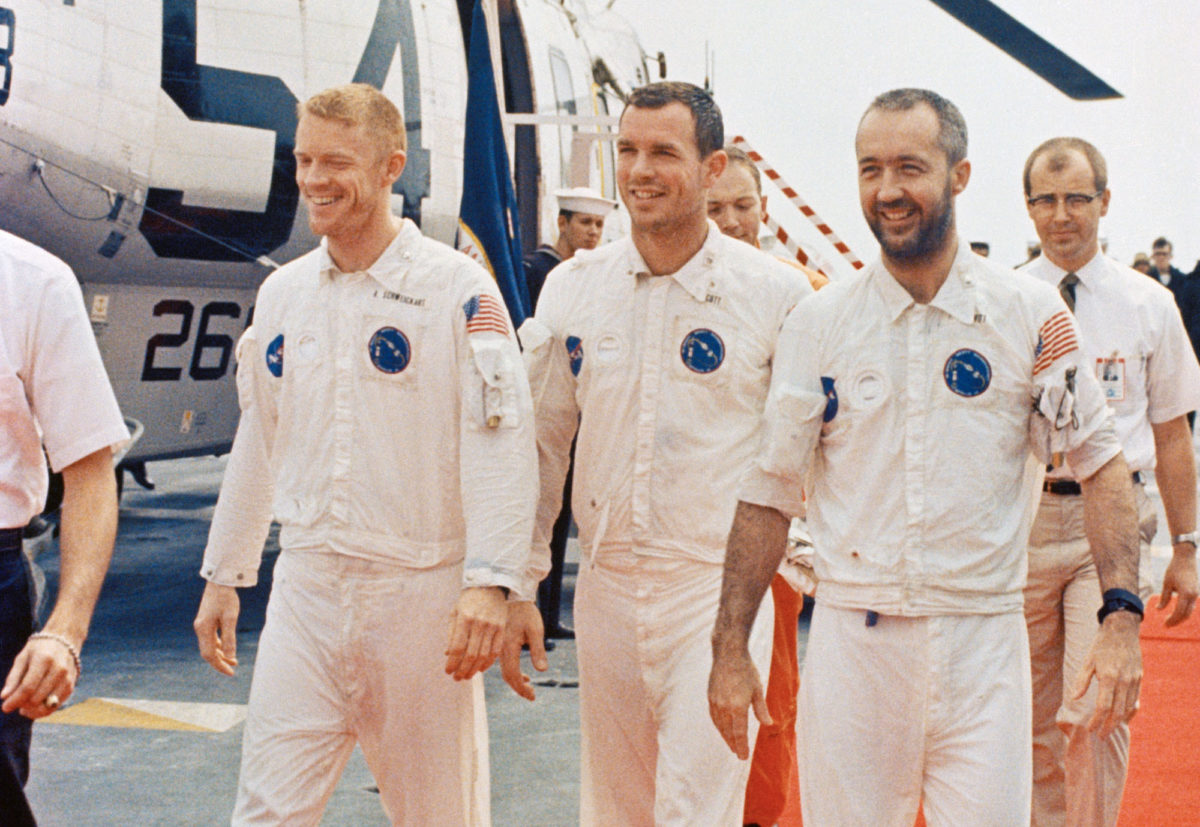Apollo 9 was the first flight test of the lunar module, the spider-like lander that would carry astronauts to the surface of the Moon. On 3 March 1969, a Saturn V rocket a lunar module, service module, and command module carrying astronauts James McDivitt, David Scott, and Russell Schweickart. In Earth orbit, the crew completed a simulated lunar surface descent, a long-distance rendezvous with the lunar module, and a spacewalk in the newly designed Apollo spacesuits.

After detaching from the Saturn V upper stage inside the command module with its attached service module, the astronauts turned around to dock nose-first with the lunar module. Four hours after launch, the three-vehicle stack popped loose from the upper stage, kicking off 10 days of systems checkouts above Earth.
After a series of service module engine burns to test loads on the combined vehicles, the crew conducted an EVA. Schweickart stepped out on the lunar module porch, which astronauts would use to exit on the lunar surface, while Scott observed from outside the command module.

On 7 March, McDivitt and Schweickart undocked inside the lunar module and fired its descent engine twice, flying to an orbit 20 kilometers higher than that of the command and service modules, where Scott remained. They jettisoned the lunar module’s descent stage and fired its ascent stage engine, marking the first time the engine was used in space. They navigated the ascent stage back to a rendezvous with the command and service modules, simulating a return from the lunar surface.

Having completed all their primary objectives successfully, the crew returned to Earth on 13 March, splashing down east of the Bahamas in the Atlantic Ocean. The mission paved the way for Apollo 10 in May 1969, which would send a crew to lunar orbit for a final landing rehearsal ahead of Apollo 11.
Apollo 9 Timeline
| Event | Time (UTC) | Date |
|---|---|---|
| Liftoff | 16:00:00 | 03 Mar 1969 |
| First stage (S-IC) separation | 16:02:43 | 03 Mar 1969 |
| Second stage (S-II) separation | 16:08:57 | 03 Mar 1969 |
| Third stage (S-IVB) cutoff | 16:11:04 | 03 Mar 1969 |
| Earth orbit insertion | 16:11:14 | 03 Mar 1969 |
| CSM/LM ejected from S-IVB | 20:08:09 | 03 Mar 1969 |
| First LM entry (Schweickart) | 11:15:00 | 05 Mar 1969 |
| Pressure suits donned | 12:15:00 | 06 Mar 1969 |
| LM depressurized | 16:45:00 | 06 Mar 1969 |
| LM forward hatch open | 16:46:00 | 06 Mar 1969 |
| CM depressurized | 16:59:00 | 06 Mar 1969 |
| CM side hatch open | 17:02:00 | 06 Mar 1969 |
| LM pilot (Schweickart) begins EVA | 17:04:00 | 06 Mar 1969 |
| LM forward hatch closed | 17:48:00 | 06 Mar 1969 |
| CM side hatch closed | 17:49:23 | 06 Mar 1969 |
| LM repressurized | 17:53:00 | 06 Mar 1969 |
| CM repressurized | 17:55:00 | 06 Mar 1969 |
| CSM/LM undocking | 12:39:36 | 07 Mar 1969 |
| LM descent stage jettisoned | 16:16:06 | 07 Mar 1969 |
| CSM/LM docking | 19:02:26 | 07 Mar 1969 |
| LM ascent stage jettisoned | 21:22:45 | 07 Mar 1969 |
| Deorbit burn ignition | 16:31:14 | 13 Mar 1969 |
| Deorbit burn cutoff | 16:31:26 | 13 Mar 1969 |
| Entry interface | 16:44:10 | 13 Mar 1969 |
| Drogue parachute deployed | 16:55:07 | 13 Mar 1969 |
| Main parachute deployed | 16:55:59 | 13 Mar 1969 |
| Splashdown | 17:00:54 | 13 Mar 1969 |
| Crew onboard recovery ship | 17:49:33 | 13 Mar 1969 |
"I hope I didn't forget anything on board it."
—Rusty Schweickart, after Apollo 9 undocked from the lunar module for the final time
Apollo 9 Cost
NASA estimated the following direct costs for Apollo 9. Full costs of the Apollo program can be found on the "How Much Did the Apollo Program Cost?" page.
| original $ | inflation adjusted $ | |
|---|---|---|
| Command & Service Module | $55 million | $463 million |
| Lunar Module | $40 million | $337 million |
| Saturn V Launch Vehicle | $185 million | $1.6 billion |
| Operations | $60 million | $505 million |
| Total | $340 million | $2.9 billion |
Inflation adjusted to 2019 via NASA's New Start Index (NNSI). Source: "History of Manned Space Flight." February 1975. NASA Kennedy Space Center. Located in NASA HQ Historical Reference Collection, Washington, D.C. Record Number 18194. Box 1.
Resources
Project Apollo
Starting with Apollo 7 in 1968 and culminating with Apollo 17 in 1972, NASA launched 33 astronauts on 11 Apollo missions. Twelve humans walked on the Moon.


 Explore Worlds
Explore Worlds Find Life
Find Life Defend Earth
Defend Earth




